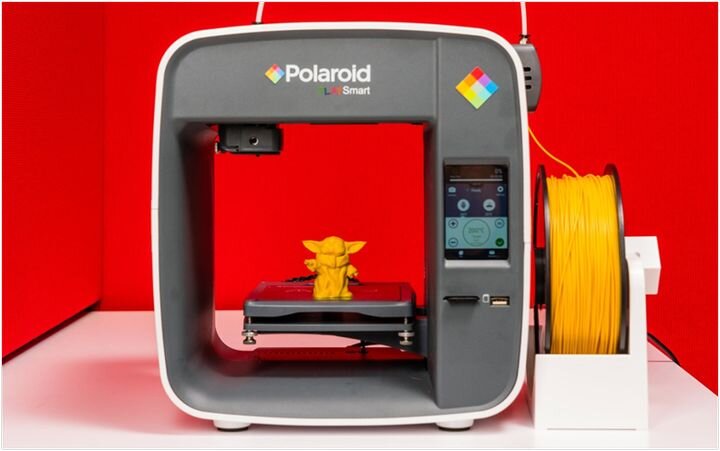![Polaroid PlaySmart 3D Printer [Source: PCMAG ]](https://fabbaloo.com/wp-content/uploads/2020/05/image-asset_img_5eb08c12a774f.jpg)
Charles R. Goulding and Andressa Bonafe look at how “legacy” companies make a transition into 3D printing.
The December 2nd issue of Barron’s presented a historical review of great tech equipment companies whose products have become “battered legacy tech”.
Some of the companies that currently fall into this category are HP, Xerox, IBM, Cisco, Seagate, and Western Digital. Showing an opposite trend, the new approach to successful technology models involves a mixture of platform companies that create annuity revenue streams with cloud and subscription models, including Apple, Netflix, SolidWorks and Adobe.
The current strength of the overall 3D printing industry is due in large part to continuously improving software and introducing ground-breaking material. The continuous improvement of software is at the essence of the cloud-based software-as-service model (SaaS) and regular advances in material sciences can provide the annuity payment supporting perpetual equipment replacement.
![Carl Icahn Sued Over HP/Xerox Deal [Source: Axios ]](https://fabbaloo.com/wp-content/uploads/2020/05/image-asset_img_5eb08c12e5bd4.jpg)
Changing the Legacy Tech Equipment Sales Model
Barron’s questioned whether new life can be created within lumbering legacy techs. The currently proposed HP/Xerox merger involves two legacy equipment companies that are both looking to 3D printing for new growth. Arguably, they should strive to develop a subscription model and avoid a future business model conversion.
The recent headline about Carl Icahn being sued over allegations that he bought US$1.2B of HP stock after learning that Xerox Corp. wanted to buy HP at a premium should not deviate from the great potential created by the merger. IBM has recently made a large acquisition of Red Hat, which already uses a subscription model.
The relentless pace of internet technology is apparent. CISCO is known as the hardware plumber for the internet falls into legacy status. CISCO is moving quickly to convert to a software company, but still remains anchored to hardware.
Carbon is an example of a fast-growing 3D printing industry entrant that already uses a subscription model. The Company actually characterizes itself as the world’s largest digital manufacturing platform.
Caveat: Multiple major European countries including France, Italy, Austria, and the U.K. have recently proposed digital services taxes that may or may not apply to particular 3D printing digital business models. 3D printing companies desirous of selling into these countries should carefully consider tailoring their business models for compliance with these tax provisions.
The Research & Development Tax Credit
Enacted in 1981, the now permanent Federal Research and Development (R&D) Tax Credit allows a credit that typically ranges from 4%-7% of eligible spending for new and improved products and processes. Qualified research must meet the following four criteria:
-
Must be technological in nature
-
Must be a component of the taxpayer’s business
-
Must represent R&D in the experimental sense and generally includes all such costs related to the development or improvement of a product or proces
-
Must eliminate uncertainty through a process of experimentation that considers one or more alternatives
Eligible costs include US employee wages, cost of supplies consumed in the R&D process, cost of pre-production testing, US contract research expenses, and certain costs associated with developing a patent.
On December 18, 2015, President Obama signed the PATH Act, making the R&D Tax Credit permanent. Since 2016, the R&D credit can be used to offset Alternative Minimum Tax (AMT) or companies with revenue below $50MM and, startup businesses can obtain up to $250,000 per year in cash rebates that can be applied to payroll taxes.
Conclusion
Transformational acquisitions and mergers may accelerate business model conversions in the 3D printing industry. Legacy 3D printing equipment sellers should carefully evaluate new business model alternatives to increase the chances of success of new product lines.

